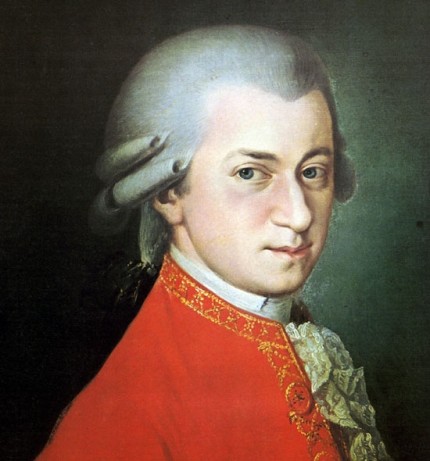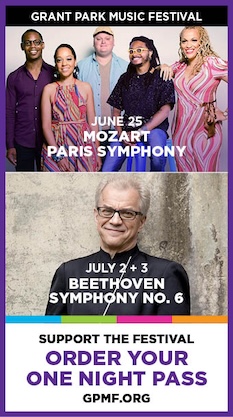Muti takes the CSO for a Classical canter with Mozart and Haydn

Last week Riccardo Muti began his tenure as the Chicago Symphony Orchestra’s tenth music director with a blazing double-helping of Berlioz, leading the season off with the French composer’s singular brand of kaleidoscopic Romanticism.
This weekend Muti is offering a palate-cleanser of sorts, with a Classical-era program of Haydn and Mozart. Characteristically, the Italian conductor gave the program an individual spin, with a fascinating slate of four short symphonies, the two by Haydn heard in their first CSO performances.
The idea of the chronological program appears to be to show some of the cross-influences Haydn and Mozart–close friends as well as contemporaries–had on each other’s music. The CSO’s music director made some brief spoken remarks about the opening pair of G-minor symphonies, though, sans amplification, his words were largely inaudible from where I sat.
Clearly the final movement of Haydn’s Symphony No. 39 (from 1770) had some impact on Mozart’s Symphony No. 25, written just three years later. In addition to sharing the key of G minor, both works are, unusually, scored for four horns and have a similar dark and driven atmosphere. More specifically, it clearly seems that the urgent final movement of Haydn’s G minor symphony is echoed in the famous unsettled opening of Mozart’s K. 183.
A fixture at the Salzburg Festival, Muti’s Mozart is a known and generally celebrated quantity. Perhaps his touch is fractionally heavier and slower than is the standard today—the closing Allegro of K.183 had its stolid moments—but rarely will hear the music so stylishly handled or precisely calibrated.
Muti clearly sees the Symphony No. 25 as moving forward from the Rococo period rather than heralding the Romantic era glimpsed on the horizon.
Others may give the contrapuntal riff of the opening movement—indelibly graven into a generation of concertgoers from its use in the opening scene of Amadeus—greater thursting impact but Muti kept the music properly in scale, bitingly urgent without losing an essential Classical refinement. Eugene Izotov’s pensive oboe solos, floating over the second theme, were glorious.
The Andante of No. 25 was flowing and gracious without being heavily underlined, and the scrupulous balancing of oboes, bassoons and horns in the trio of the Minuet was handled with characteristic dexterity. Too bad one of the section horn players was having an off night.
Mozart’s Symphony No. 34, K.338, is set in three movements rather than his standard four–Mozart began a minuet but it is either lost or was never completed. The symphony is characteristic of his more public works, as with the martial opening with timpani, yet K. 338 also offers an extraordinarily lovely slow movement, striking even by Mozart standards.
Muti seemed intent on bringing out the playful Haydenesque elements in the opening movement, and while the overlapping string phrasing was elegantly turned in the Andante, he avoided the temptation to overinflate the lyricism out of period. This may be Mozart’s final symphony written in Salzburg, but the energetic closing movement has an almost Roman carnival feel to it. Or so it seemed in the hands of the Italian maestro who drew terrific verve from the scurrying strings and fluid oboe work by Izotov and Lora Schaefer (the latter, Muti’s first appointment to the orchestra).
While Muti’s bona fides in Mozart are justly celebrated, his Haydn is a less well known quantity, and more likely to divide opinion.
While Haydn’s Symphony No. 39 hails–just–from his sturm und drang period, it’s less wild, or agitated than many of his more experimental forays, though imbued with a mordant dark quality. Here too Muti resisted the urge to overplay the minor-key dramatics, keeping the rhythms buoyant, textures notably clear and dynamics alertly marked.
Haydn’s Symphony No. 89 in the sunnier key of F major closed the program. With a flute introduced into the evening for the first time, the delicious duo piping of Mathieu Dufour and Izotov could have charmed the birds out of the Austrian trees. Muti also deftly brought out the oompah folk strain in the Minuet’s trio.
The Vivace theme is typical of Haydn’s rollicking closers, submitted to much contrapuntal ingenuity and assorted curveballs. Muti alertly observed all the dynamic drops, surprise rests, and assorted hijinx, yet it seemed that the music could have smiled more and lacked an essential humor for all the drive and impeccable balancing.
Still, top Mozart and largely enjoyable CSO premieres of two Haydn symphonies. The Muti Express continues.
The program will be repeated 8 p.m. Friday and 7:30 p.m. Tuesday. cso.org; 312-294-3000.
Posted in Uncategorized


